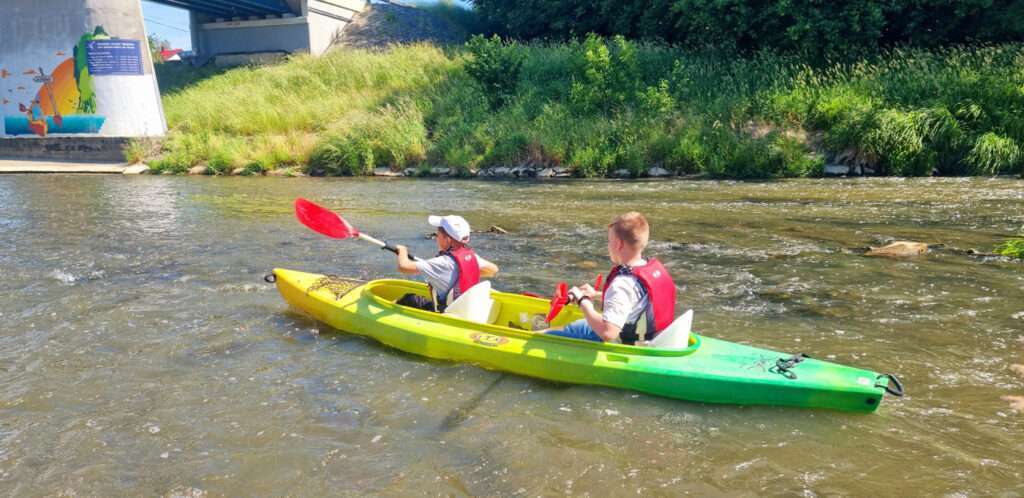The skills of rowing and paddling a raft are so different that they don’t even go in the same direction. The rower, alone on the metal frame seat, propelling a raft with two long oars in oarlocks, faces downriver and works against the current most of the time, while his passengers take care of the relaxation and sightseeing. The four to eight people usually employed in a paddle boat do most of their work with the current, each wielding a single-bladed paddle and using paddling teamwork to move across or down the river. The argument over which method is best goes on, but different scenarios and groups of people dictate which is most appropriate, and there are a few universal facts which can’t be overlooked.
River Type
Generally, on narrow or rocky runs, oars can get hung up, reducing the maneuvering capabilities of the rower and putting the raft at risk of getting off course or flipping (although crew with paddles can assist the rower in emergencies). Paddlers work close to the boat and, if they understand a leader’s commands, operate as a team. With enough strength and endurance, they can micro-steer and make crucial adjustments through tight stretches. On wide rivers with more daunting hydraulics, an oarsman can set up for rapids and power through them.
Carrying Gear
The frame in an oar raft holds the boat’s shape and provides protected areas and metal beams to secure loads. Also, carrying fewer people, it is by far the best choice for cargo.
Safety
The frame and weight of gear usually carried in oar boats can reduce the chance of flipping, but the flip itself is more dangerous because of the metal and heavy bundles which can injure passengers. Turning an oar-frame craft upright is far more difficult as well. In a paddle raft individuals can transfer their weight to avoid flips during emergencies.
Fun and Teamwork
A paddle raft allows every passenger to participate. They learn a skill and cooperate, and the experience usually includes some bonding of crew members. The oarsman works alone most of the time. However, an oar raft is more comfortable for passengers, and families with small children who don’t have paddling skills can stay drier and feel safer.
General Efficiency
In an paddle boat, with steering power in the stern and cadence-setting paddlers in front, several bodies work together in a relatively light raft and are able to adjust their paddling direction and body weight to fit the needs of any situation. There is, however, a pause in reaction time as paddlers process the commands of the leader, whereas the oarsman responds immediately. In addition, one weak or confused paddler can sabotage a maneuver. Overnight trips need an oar boat to carry gear.
There are hybrid rafts, in which rowing and paddling can coexist.

